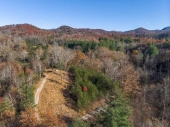
 2
2








 1
1




 3
3




Invasive plants are Earth's way of insisting we notice her medicines. Stephen Herrod Buhner
Everyone learns what works by learning what doesn't work. Stephen Herrod Buhner




s. lowe wrote:More specifics will depend on how you want to use it in the future (do you want a 6 acre field? A food forest? A patchwork of gardens and small orchards?




Anne Miller wrote:Hi, Steve Welcome to permies! Congratulations on the six acres!
We have a Soil forum that might be very helpful. Here are some articles I would recommend:
List of Dr. RedHawk's Epic Soil Series Threads
https://permies.com/wiki/redhawk-soil




"The rule of no realm is mine. But all worthy things that are in peril as the world now stands, these are my care. And for my part, I shall not wholly fail in my task if anything that passes through this night can still grow fairer or bear fruit and flower again in days to come. For I too am a steward. Did you not know?" Gandolf




Steve Sanders wrote:
s. lowe wrote:More specifics will depend on how you want to use it in the future (do you want a 6 acre field? A food forest? A patchwork of gardens and small orchards?
It'll be used as a patchwork of gardens and small orchards - certainly not a 6 acre field. Regarding the tractor, thanks for the ideas.

| I agree. Here's the link: http://stoves2.com |



